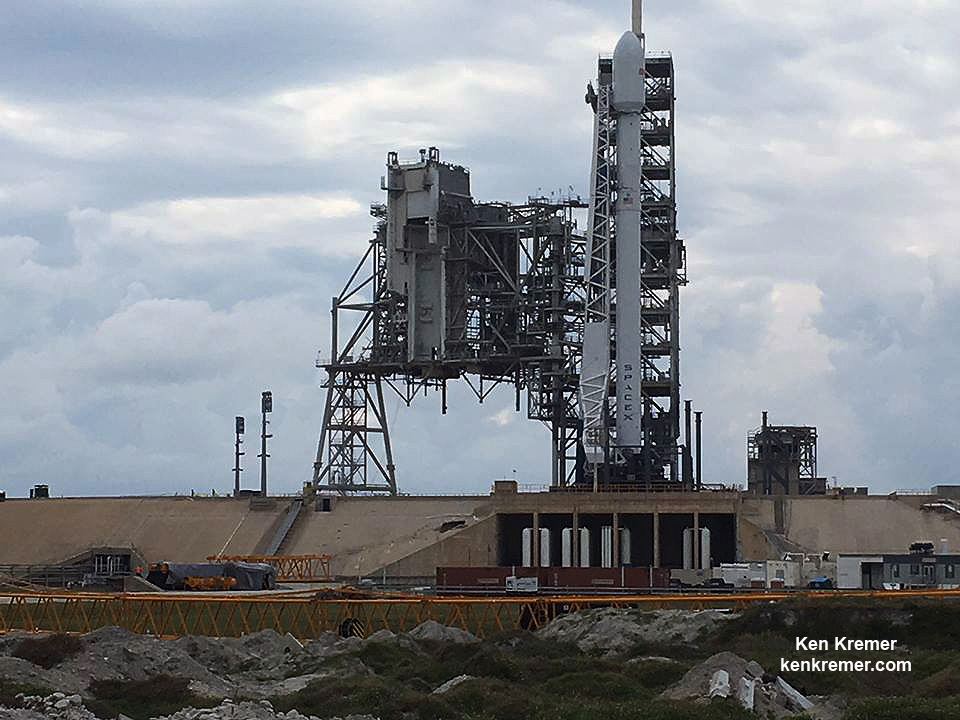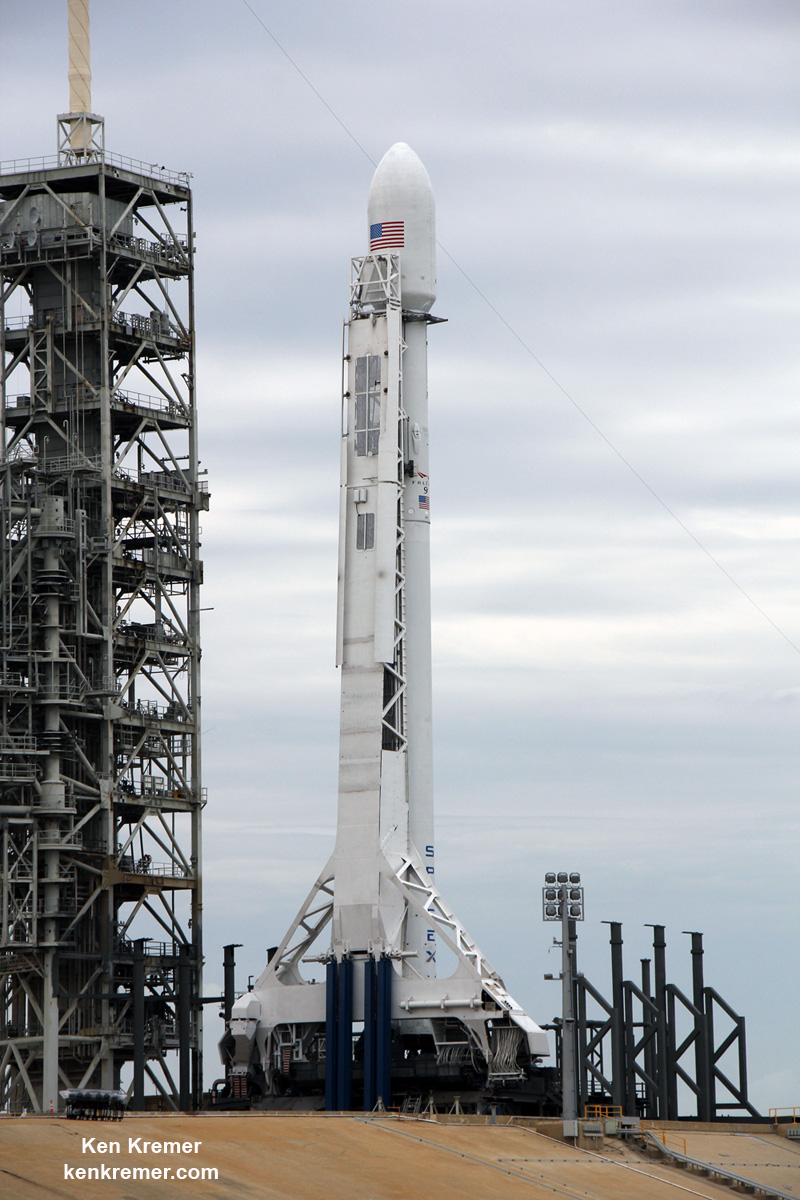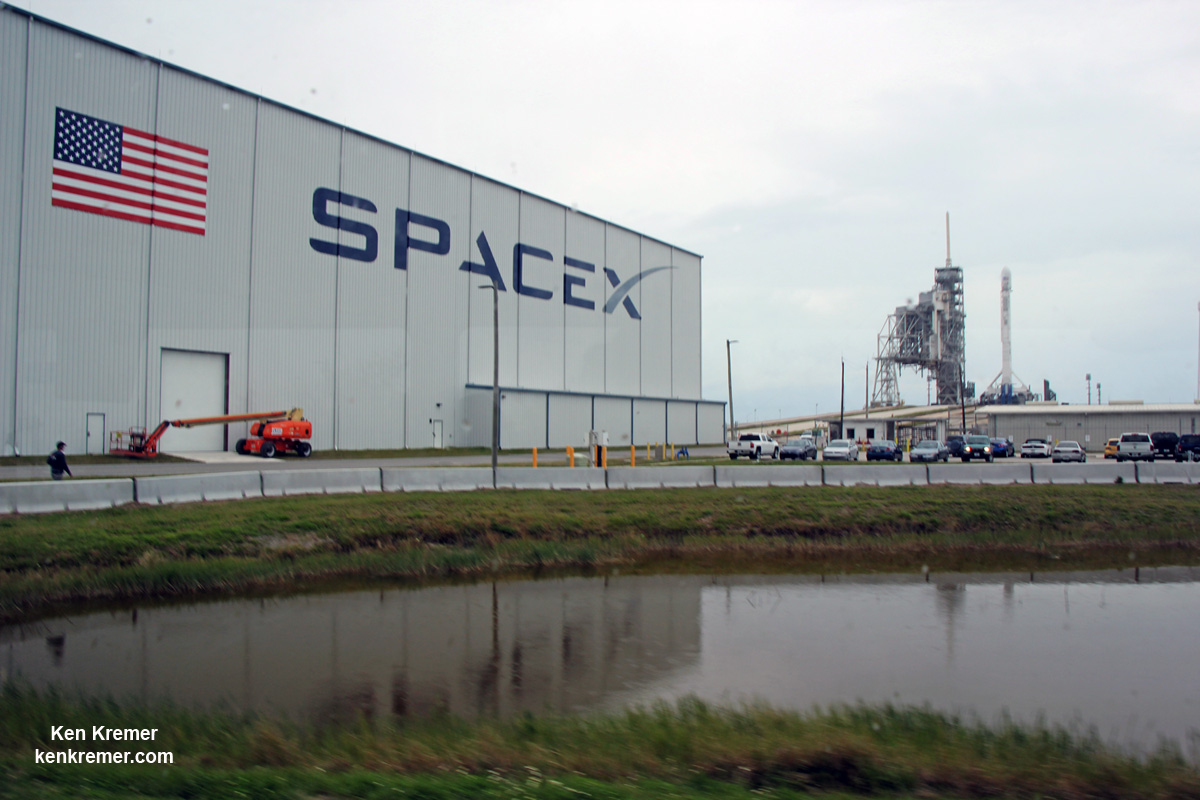
KENNEDY SPACE CENTER, FL – High winds halted SpaceX’s early morning attempt to launch a legless Falcon 9 rocket and the EchoStar XXIII commercial communications satellite soon after midnight Tuesday, Mar. 14, from the Florida Space Coast amidst on and off rain showers and heavy cloud cover crisscrossing central Florida all afternoon Monday, Mar. 13 and into the overnight hours.
SpaceX then decided to reschedule the EchoStar 23 telecommunications satellite launch for post-midnight Thursday, March 16, at 1:35 a.m. EDT.
Tuesday’s launch scrub was called some 40 minutes prior to the scheduled opening of the two and a half hour long launch window at 1:34 a.m. EDT.
“Standing down due to high winds; working toward next available launch opportunity,” SpaceX tweeted just as engineers had started fueling the two stage rocket poised for blastoff from historic launch pad 39A from NASA’s Kennedy Space Center.
After further evaluating when to schedule a second attempt, SpaceX then stuck to their original plan of a 48 hour turnaround.

If all goes well, March features a triple header of launches with launch competitor and arch rival United Launch Alliance (ULA) planning a duo of nighttime blastoffs from their Delta and Atlas rocket families. The exact dates are in flux due to the postponement of the SpaceX Falcon 9. They had been slated for March 17 and 21 respectively.
Since continuing high winds have plagued the space coast region all day today and the weather is forecast to improve significant tomorrow, a two day delay to Thursday seemed rather prudent – solely from a weather standpoint.
“After standing down due to high winds, SpaceX is now targeting Thursday, March 16th for the EchoStar XXIII launch.” SpaceX officials announced via their website and social media.
“The launch window opens at 1:35 am ET and weather conditions are expected to be 90% favorable.”
The two and a half hour launch window closes at 4:05 a.m. EDT.
You can watch the launch live on a SpaceX dedicated webcast starting about 20 minutes prior to the 1:35 a.m. liftoff time.
The SpaceX webcast will be available starting at about 20 minutes before liftoff, at approximately 1:14 a.m. EDT.
Watch at: SpaceX.com/webcast

The two stage Falcon rocket will deliver the commercial EchoStar 23 telecommunications satellite to a Geostationary Transfer Orbit (GTO) for EchoStar Corporation.
The satellite will be deployed approximately 34 minutes after launch.
The EchoStar 23 launch counts as only the second Falcon 9 ever to blastoff from pad 39A – which SpaceX’s billionaire CEO Elon Musk leased from NASA back in April 2014.
The inaugural Falcon 9 blastoff successfully took place last month on Feb. 19, as I reported here.
The nighttime lunge to space should offer spectacular viewing. But unlike most recent SpaceX missions, the first stage will not be recovered via a pinpoint propulsive landing either on land or on a barge at sea.
Because of the satellite delivery to GTO, there are insufficient fuel reserves to carry out the booster landing.
“SpaceX will not attempt to land Falcon 9’s first stage after launch due to mission requirements,” officials said.
Therefore the first stage is not outfitted with either landing legs or grid fins to maneuver it back to a touchdown.
However, SpaceX has announced that this Falcon 9 will be the last expendable first stage.

Musk hopes to dramatically cut the cost of access to space by recovering and recycling the boosters for reuse with a new paying customer.
Indeed the SES-10 payload is already slated to fly on the first ‘flight proven’ rocket sometime in the next few weeks.
Stay tuned here for Ken’s continuing Earth and Planetary science and human spaceflight news.

As always, GO SpaceX!